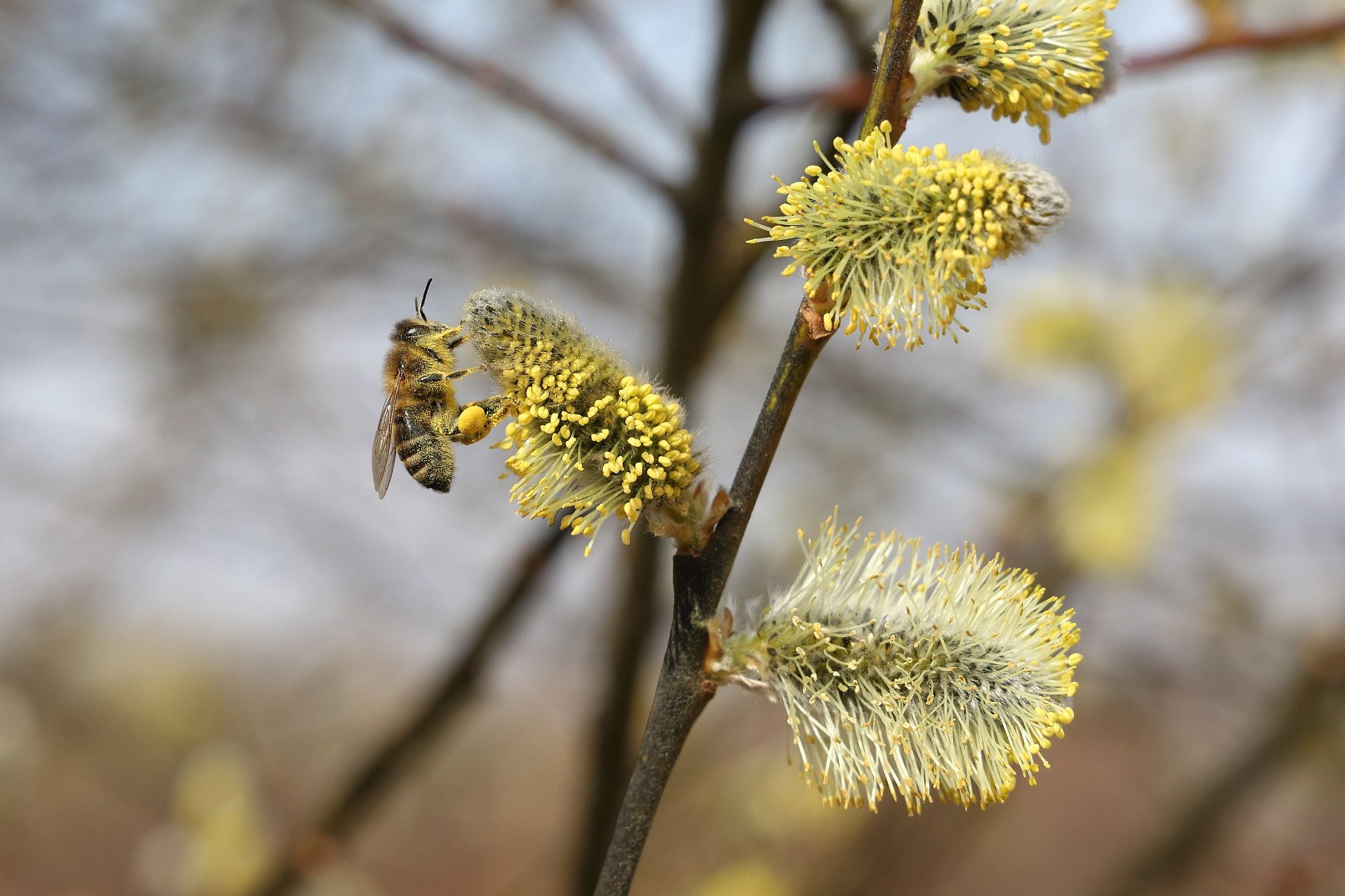Salix caprea
Goat willow
Species Tolerances
- Drought Tolerance: Medium
- Shade Tolerance: No
- Waterlogging Tolerance: Medium
- Frost Tolerance (trees from warmer climates may be frost tolerant, but their flowers may not be): Yes
- RHS Hardiness: H6
- Optimum Conditions for Growth:
A small tree which grows in a wider range of soils than most other willows. Tolerates alkaline and relatively dry soils as well as marshy ground, lake margins or hedgerow. Occurs widely throughout the British Isles. - Susceptibility to Pest/Disease:
May be susceptible to honey fungus and watermark disease

Salix caprea male inflorescence, Czechian, Apis mellifera/ T. Kebert/ https://creativecommons.org/licenses/by-sa/4.0/deed.en
Service to Pollinators
- Summary of Service to Pollinators:
Good source of nectar and pollen for all species of bee in spring, and a good source of honeydew when aphids are active. Also provides some resins/oils for honeybees to make propolis - Nectar Value to Pollinators: 2 (of 0-3)
- Honeydew Value to Pollinators: 2 (of 0-3)
- Pollen Value to Bees: 2 (of 0-3)
- Flowering Period: March-Apr
Risks
- Human Toxicity: Non-toxic
- Livestock Toxicity: Non-toxic
- Invasive Risk: No
- Suckering: No
Products
- Edible Fruit: No
- Edible Leaves: Insufficient Data
- Edible Sap: Insufficient Data
- Edible Seeds: Insufficient Data
- Honey, major source in UK: Yes
- For any medicinal potential, see 'Further Details' below.
- Timber: No
- Livestock Fodder: Yes
- Other Products:
Woodchip, biomass, is easy to coppice or pollard.
Utility
- Nitrogen Fixation: Yes
- Organic Matter Accumulation: Insufficient Data
- Phytoremediation: Insufficient Data
- Deacidification: Insufficient Data
- Windbreak: Yes
- Soil Erosion Control: Yes
- Shade or Shelter: Yes
- Plant Support: Insufficient Data
- Integrated Pest Management: Insufficient Data
- Wildlife Value: Yes
- Wildlife Value Summary:
Very good for biodiversity referring to invertebrate diversity feeding on the tree, especially insects. Seeds and fruit are available to a large range of birds and mammals. - Graduated Nativeness Classification ⓘ: 1 (of 1-10)1. Historic Native
2. Historic Introduction
9. Neutral Introduction
Further Details
Will hybridize with other willows, especially Salix cinerea (Grey will/Common sallow). Medicinal potential. Can reach 20m tall in sheltered woodland, but often no more than 8m rounded clumps and 20m wide on open ground.